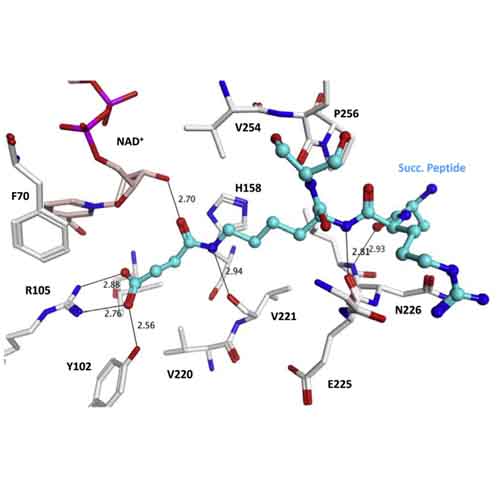Identification of the subtype-selective Sirt5 inhibitor balsalazide through systematic SAR analysis and rationalization via theoretical investigations
2020-08-01
Carina Glas, Johannes C.B. Dietschreit, Nathalie Wössner, Lars Urban, Ehab Ghazy, Wolfgang Sippl, Manfred Jung, Christian Ochsenfeld, Franz Bracher
European Journal of Medicinal Chemistry, 2020, 206, 112676
We report here an extensive structure-activity relationship study of balsalazide, which was previously identified in a high-throughput screening as an inhibitor of Sirt5. To get a closer understanding why this compound is able to inhibit Sirt5, we initially performed docking experiments comparing the binding mode of a succinylated peptide as the natural substrate and balsalazide with Sirt5 in the presence of NAD+. Based on the evidence gathered here, we designed and synthesized 13 analogues of balsalazide, in which single functional groups were either deleted or slightly altered to investigate which of them are mandatory for high inhibitory activity. Our study confirms that balsalazide with all its given functional groups is an inhibitor of Sirt5 in the low micromolar concentration range and structural modifications presented in this study did not increase potency. While changes on the N-aroyl-β-alanine side chain eliminated potency, the introduction of a truncated salicylic acid part minimally altered potency. Calculations of the associated reaction paths showed that the inhibition potency is very likely dominated by the stability of the inhibitor-enzyme complex and not the type of inhibition (covalent vs. non-covalent). Further in-vitro characterization in a trypsin coupled assay determined that the tested inhibitors showed no competition towards NAD+ or the synthetic substrate analogue ZKsA. In addition, investigations for subtype selectivity revealed that balsalazide is a subtype-selective Sirt5 inhibitor, and our initial SAR and docking studies pave the way for further optimization.








